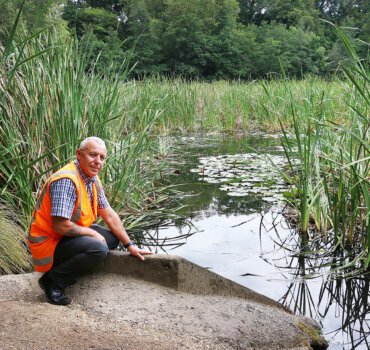
Martin Mould says the plan is not a quick fix, but will help

Martin Mould says the plan is not a quick fix, but will help
A series of measures have been proposed to significantly improve the quality of the water at Lake Te Koo Utu in Cambridge.
Long standing water quality concerns were raised during Waipā District Council’s recent consultation on the Lake Te Koo Utu draft concept plan in April.
A plan to address this issue has now been put forward. Broken down into three stages, it would see the construction of raingardens and devices to treat stormwater runoff before it can get into the lake.
Council water services manager Martin Mould said Cambridge residents had made it very clear that improving the water quality of the lake was a priority.
“This is something that was considered extensively and addressed to a point in the draft concept plan.
“For any significant improvement to the quality of the water however, we need to look at treating water before it goes into the lake. This is something we believe can be achieved through the use of raingardens and proprietary devices.”
Raingardens are planted areas installed on the roadside to filter water runoff from the street before it enters the lake. Proprietary devices are fitted inside stormwater pipes to filter water as it passes through.
Mould said the one of the biggest sources of contamination in the lake was pollutants such as oil, petrol, zinc and rubber from cars which collected in rainwater and eventually made its way into the lake.
“Once these pollutants reach the lake, they sediment at the bottom creating layers of contaminated sludge. If we can ensure the water going into the lake is filtered of some of this, that should make difference to its quality. While this isn’t a quick fix, it will help over time.”
The three-stage programme would target the most critical areas such as intersections, which produce the highest contaminate loads, first. The work would extend then to high use roads in stage two and low use roads in stage three.
In stage one, 12 raingardens would be retrofitted near to high use intersections around the lake and three proprietary devices would be fitted into the existing stormwater outlets.
Another 32 raingardens would then be installed in stage two and 66 in stage 3 of the plan on high use streets further away from the lake and reserve.
Stage one of the project will cost around $356,000 and has been included in the draft Long Term Plan (LTP).
If funding is allocated, it would be rolled out in 2021/22.
Stages two and three would need to be considered in future LTPs.








